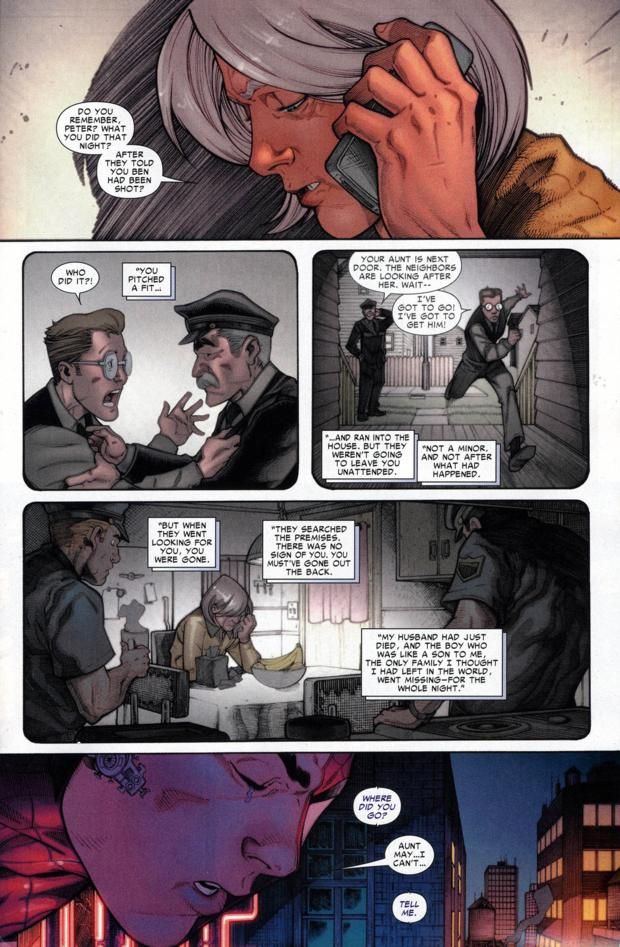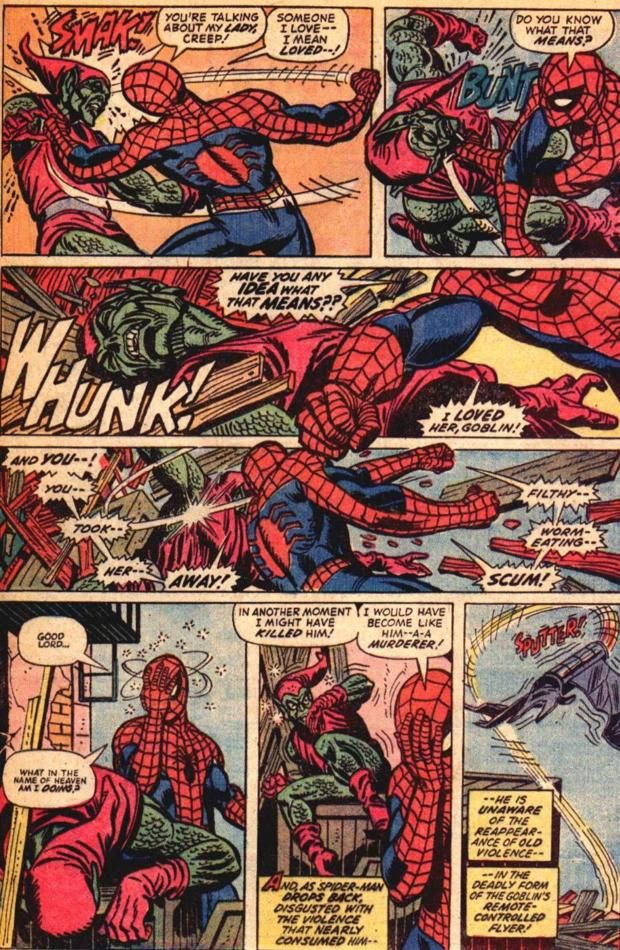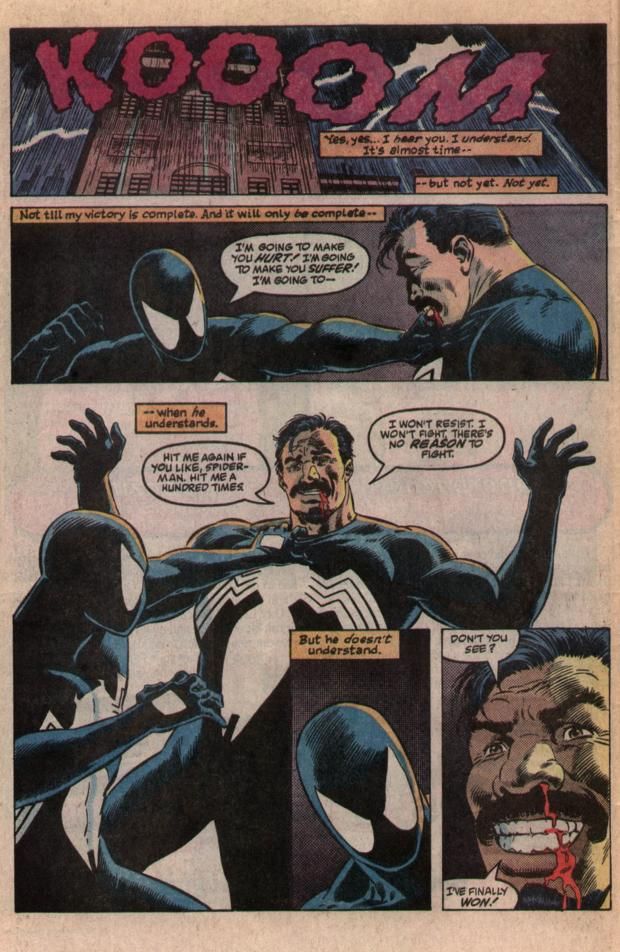In honor of the fiftieth anniversary of Spider-Man, we're doing four straight months of polls having to do with Spider-Man, culminating with the release of the Amazing Spider-Man film in July. The last installment will deal with Spider-Man stories, but this month will be about Spider-Man's writers and artists.
You all voted, now here are the results! Here is a master list of all the creators listed so far. We continue with Spider-Man writers #6-4...
Enjoy!
6. Dan Slott
Despite "only" working on the character since 2008, Dan Slott has already written nearly fifty issues of Amazing Spider-Man. One of the original team of writers who launched Brand New Day in Amzing Spider-Man #546, Slott became the sole writer of Spider-Man with Amazing Spider-Man #648. All told, he has written:
Amazing Spider-Man #546-548 (the initial Brand New story arc, setting up Peter Parker's new status quo), 559-561 (the re-introduction of Mary Jane Watson into the title), 568-573 (the New Ways to Die storyline, bringing Norman Osborn back into the book and introducing Anti-Venom), 581-582, 590-591, 600, 618-621 and then 648-current (#685 is the latest issue) while a few fill-in issues or co-written issues were mixed in there even in the fill-in issues, Slott did back-up stories. That run includes the Spider-Island crossover and the current Ends of the Earth epic.
And that's just his Amazing Spider-Man work! He also wrote an excellent Spider-Man/Human Torch mini-series.
Slott's best traits on Amazing Spider-Man have been the way that he follows in the strong suit of past Spider-Man writers of mixing action-packed adventures with character-driven stories in a blend that feels like a natural extenuation of whatever is going on in the book at that time. So a big event where everyone on Manhattan gets Spider-powers is personalized by the fact that Peter Parker's girlfriend has the powers, too, and it leads her to figure out that Peter has been lying to her about his secret identity. Or, in one of the strongest one-shot issues of Slott's run, Amazing Spider-Man #665, we see the trade-off for Spider-Man and Peter Parker both becoming so successful (Spider-Man being on two Avengers teams and the Future Foundation and Peter now becoming a successful designer at a think tank reverse-engineering the gadgets he creates as Spider-Man into useful technology for everyday life), which is that he is too busy for people like his closest friends. So when Betty Brant is assaulted after Peter stands her up for a standing movie date, Peter vows revenge (naturally) but what does that look like to his friends and family? Peter is out finding Betty's assailant, but to everyone else, he is not there for Betty when she needs it the most. Aunt May calls him and reads him the riot act and brings up something shocking to Peter...
See? Now that's some character-driven twist right there. And that's the sort of approach Slott takes to his whole Amazing Spider-Man run, you never know exactly how he will zig or zag on any given plot point/character interaction. It makes reading Amazing Spider-Man a true roller coaster ride of never knowing where he will be headed. And when he slows down for the character-heavy stuff, he nails it, like Peter's reaction to the death of J. Jonah Jameson's wife, which was essentially "one death too many" for Peter. Peter vows that he will not let anyone die. It is an extremely powerful two-parter with excellent Marcos Martin art. It is probably the highlight of Slott's run (so far, at least).
And, of course, Slott knows how to bring the funny. So he's pretty much everything you want from an ongoing Spider-Man writer. Good thing he's writing the book, huh?
5. Gerry Conway
Thrown into the mix of being the first ongoing scripter of Amazing Spider-Man after Stan Lee was a daunting task for young Gerry Conway (only in his early 20s at the time), but Conway responded to the call with flair and distinction with a memorable run that still resonates to this day.
In his 40 issues on Amazing Spider-Man (#111-149), Conway did more than you'd see in a HUNDRED issues of most other comics. He introduced one of Marvel's biggest characters, the Punisher, he developed Mary Jane Watson into one of the best supporting characters in Marvel Comics history, he introduced the world to the idea of the "Clone Saga" and, most notably of all, he wrote one of the single most famous Spider-Man storylines, the Death of Gwen Stacy, as Peter Parker loses his girlfriend to his nemesis, the Green Goblin.
Here's a page from the second part of the story, as Peter seeks revenge...
The original Goblin dies and Conway later establishes the second Goblin, Peter's best friend, Harry Osborn!
What's interesting about Conway is that he actually had a rare second act on Spider-Man. He returned to the Spider-books thirteen years after his first run ended to do a well-received run on Spectacular Spider-Man from #137-174 and Web of Spider-Man from #47-70 (only plots on some of the stories). In that run, he introduced the villain Tombstone and did some very strong work with Joe "Robbie" Robertson and Puma. While his original run on Amazing Spider-Man was bold and very much flying by the seat of your pants, his Spectacular/Web run was calculated and well-crafted, very much the distinction between a young writer and an experienced veteran.
If we just judged Conway by his late 1980s/early 1990s run, he would be well received but combined with his early work he is one of the most iconic Spider-Man writers there is.
4. J.M. DeMatteis
Like Conway, J.M. DeMatteis had a few different stints writing Spider-Man, and in DeMatteis' case, you'd be hard pressed to pin down which stint was his most iconic.
Don't get me wrong, Kraven's Last Hunt will be DeMatteis' longest-lasting legacy on the Spider-Man titles, and with good reason, as the six-issue story explored the mindset of one of Spider-Man's villains to an extent never seen in a Spider-Man comic at that point (1988), as Kraven, sick of being defeated by Spider-Man decides to "kill" Spider-Man and take over his role to show how he is better than Spider-Man. This involves keeping Spider-Man buried alive for two weeks while Kraven kills bad guys dressed as Spidey, so when Spidey finally breaks free of his confinement, he is none too pleased...
However powerful Kraven's Last Hunt was (and it was really powerful), DeMatteis' run on Spectacular Spider-Man might be just as powerful. In his stint on Spectacular from #178-203, DeMatteis concerned himself with Harry Osborn, as DeMatties explored the twisted father-son relationship with Norman Osborn and Harry, as well as Harry's connection with his own family (especially his son, Normie), his connection to Peter Parker and, of course, to the legacy of the Green Goblin. It is a striking piece of work. Few writers are as well-connected to the workings of humanity as J.M. DeMatteis, and he sure delivered a wonderful study of the human spirit in his Spectacular run (that was, in and of itself, spectacular).
But that's not all!
No sir, he also had a run on Amazing Spider-Man from #389-406 that included one of the most heartfelt issues of Spider-Man ever, the death of Aunt May in #400, an issue that touches fans deeply to this day, even after retcons have changed it so that May did not actually die.
But that's not all!
DeMatteis broke in on Spider-Man with an extended off-beat run on Marvel Team-Up from #111-133. These were an early sign of the unique flavors of a J.M. DeMatteis script.
But that's not all!
DeMatteis returned to Spectacular Spider-Man for another run, from #241-258. He also has written a number of mini-series and one-off stories and Spider-Man tales in anthologies. When you write the history of Spider-Man, you are bound to find yourself reflecting in the greatness of J.M. DeMatteis at one point or another.




